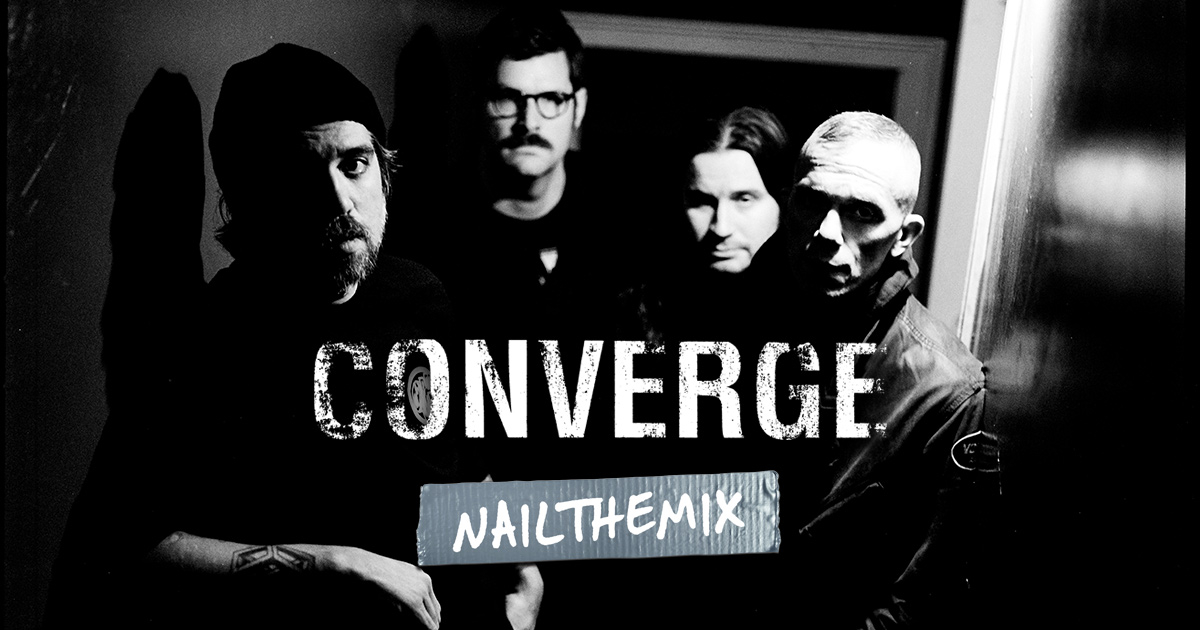
# Mixing Alestorm’s Drums: Lasse Lammert’s Tom Gating and Overhead Tricks
Nail The Mix Staff
Let’s get real. Getting drums to sound massive and clean in a busy metal mix is one of the biggest challenges we face. You want that huge, roomy power, but you also need the punch and clarity to cut through a wall of guitars and vocals. For a band like Alestorm, with their dense, high-energy arrangements, a sloppy drum mix is simply not an option.
So how do the pros handle it? We got an inside look at how mixer/producer Lasse Lammert tackled Alestorm’s drums during his exclusive Nail The Mix session. Forget basic gating that chokes the life out of your shells. Lasse’s approach is all about surgical cleaning that preserves tone and power. We’re breaking down two of his key strategies: one for taming wild toms and another for gaining control over your overheads.
Taming Tom Bleed for Ultimate Punch and Clarity
Here’s the classic problem: you hit a tom, you get that initial “thwack,” and then the “boom” of the shell rings out. Awesome. But a split-second later, the drummer smacks a crash cymbal, and now your tom mic is full of nasty high-frequency “tssssss” that washes out the mix. The goal is to keep the tom’s natural decay but nuke the cymbal bleed that comes with it. Lasse showed us a few ways to get it done, which is a common challenge pros like Jens Bogren also have unique solutions for.
The Multi-Band Gate Approach
Instead of a simple gate that just shuts off all sound, the trick is to treat the high and low frequencies differently. The cymbal bleed lives in the high end, while the tom’s body and sustain are all in the low-mids. A multi-band gate lets you clamp down on the highs immediately while letting the lows ring out naturally.
Lasse demonstrated this using a plugin called Gatey-Tron, splitting the frequency at around 400Hz.
- Low-Frequency Band: He set a long release time (around 700ms) to let the full, natural body of the tom sustain.
- High-Frequency Band: He used an immediate, fast release with barely any hold time. The second the high-frequency transient of the tom hit is over, this band shuts down, killing any cymbal bleed instantly.
The Pro-Tip: Fixing the Key Input Bug
Here’s a sick trick Lasse shared. He found that Gatey-Tron sometimes wouldn’t register the sidechain key input if the key track itself was totally silent between hits. The plugin needs to “hear” something to work properly. His solution is genius: on the key track, he inserts an SSL Channel Strip plugin and turns on the “Analog” button. This introduces a tiny bit of that classic console hiss—just enough noise for the gate to recognize the key input and function perfectly.
The Modern Solution: Boz Digital Labs The Silencer
While a multi-band gate offers tons of control, Lasse pointed out that plugins like The Silencer from Boz Digital Labs now make this process much easier. It’s built specifically for this task and does the same thing with simpler controls.
It’s an intelligent gate that dynamically filters out high-frequency bleed while preserving low-frequency sustain. You can use simple “Length” and “Bleed” controls to dial in how much sustain you want and how aggressively you want to remove the cymbal hiss.
For maximum accuracy, especially with softer hits or fast fills, Lasse still feeds it a dedicated key trigger track. He’ll typically copy the same settings across all the tom tracks and then adjust the “Length” for each drum—a little longer for the big floor toms, and shorter for the higher rack toms. This is a perfect example of a smart EQ strategy that uses dynamics to shape the tone.
Gaining Control Over Your Overheads: Taming the Snare
Next up: overheads. They’re crucial for capturing the cymbals and the overall picture of the kit, but they can also pick up a ton of snare. Too much snare in the overheads can make your drum sound feel distant, washy, and rob the direct snare mic of its impact. Lasse’s goal isn’t to remove the snare completely but to subtly turn it down in the overheads for more control.
Dynamic EQ for Surgical Snare Reduction
One killer method is using a dynamic EQ, side-chained to the snare. Lasse showed this with a plugin called Big Beautiful Door. Here’s the setup:
- Place the dynamic EQ on your overheads bus.
- Set up a sidechain input from your snare trigger or top mic track.
- Create a dynamic band—in this case, a low-cut (or high-pass) filter.
- Set it so that every time the snare hits, the filter is briefly activated.
Lasse set his filter around 765Hz. For the split-second the snare is hitting, the EQ carves out a chunk of the low-end and body from the overheads. Since cymbals don’t have much information down there, you don’t hear them being affected, but the “thump” of the snare in the overheads gets ducked. The result is that the close mics provide the punch, and the overheads provide the top-end “air” without the snare getting in the way.
Advanced Ducking with MeldaProduction’s M-Drum-Leveler
Here’s another incredibly clever, “off-label” use of a plugin. Lasse is a big fan of MeldaProduction, and he uses M-Drum-Leveler not for leveling, but for selective ducking.
This method gives you a more organic way to push the snare down. Instead of a filter, you’re ducking the level of the snare itself within the overheads.
- Inside the plugin, use the sidechain EQ to isolate the fundamental frequency of the snare drum.
- Set the plugin’s “Target level” to be very low.
- Set the threshold so it only grabs the louder snare hits.
- Here’s the key: Don’t use 100% compression! This would cause obvious, ugly pumping. Instead, Lasse sets the compression amount to just 15-20%.
This subtly turns down the overheads signal for just a moment when the snare hits. It’s a transparent way to add punch and focus to your drum mix. It’s one of those advanced metal compression secrets that separates amateur and pro mixes.
Putting It All Together for a Pro Metal Drum Sound
Cleaning up your drums doesn’t mean making them sound sterile or sampled. It’s about surgical control so that every part of the kit can do its job effectively.
The key takeaways from Lasse Lammert’s Alestorm mix are:
- Clean your toms intelligently: Use multi-band gating or a tool like The Silencer to preserve the tom’s body while killing cymbal bleed.
- Control the snare in your overheads: Use dynamic EQ or a leveler in ducking mode to gently push the snare down in the overheads, making space for the direct mic’s impact.
These are the kinds of actionable, real-world techniques that can transform your mixes. Seeing a pro like Lasse dial in these settings on a real session, explaining every move, is a game-changer. That’s exactly what you get with Nail The Mix. Every month, you don’t just get a tutorial; you get the actual multi-tracks from bands like Alestorm and watch the original producer mix the song from scratch.
Alestorm on Nail The Mix
Lasse Lammert mixes "Voyage of the Dead Marauder"
Get the Session
Ready to see exactly how these tips fit into a complete, powerful metal mix? Check out the full Alestorm “Zombies Ate My Pirate Ship” mixing session with Lasse Lammert.
If you’re tired of guessing and want to learn the proven techniques the pros use on massive albums, it’s time to join the NTM community and start mixing beyond presets to unlock your sound.







